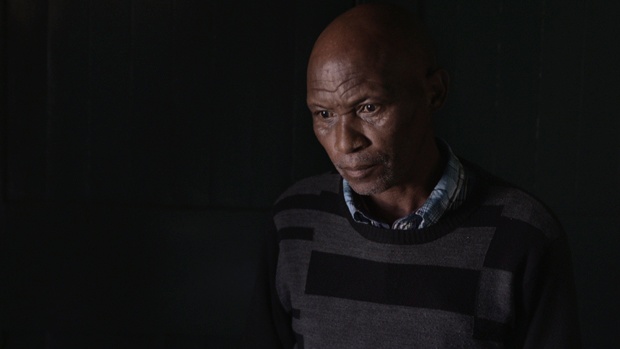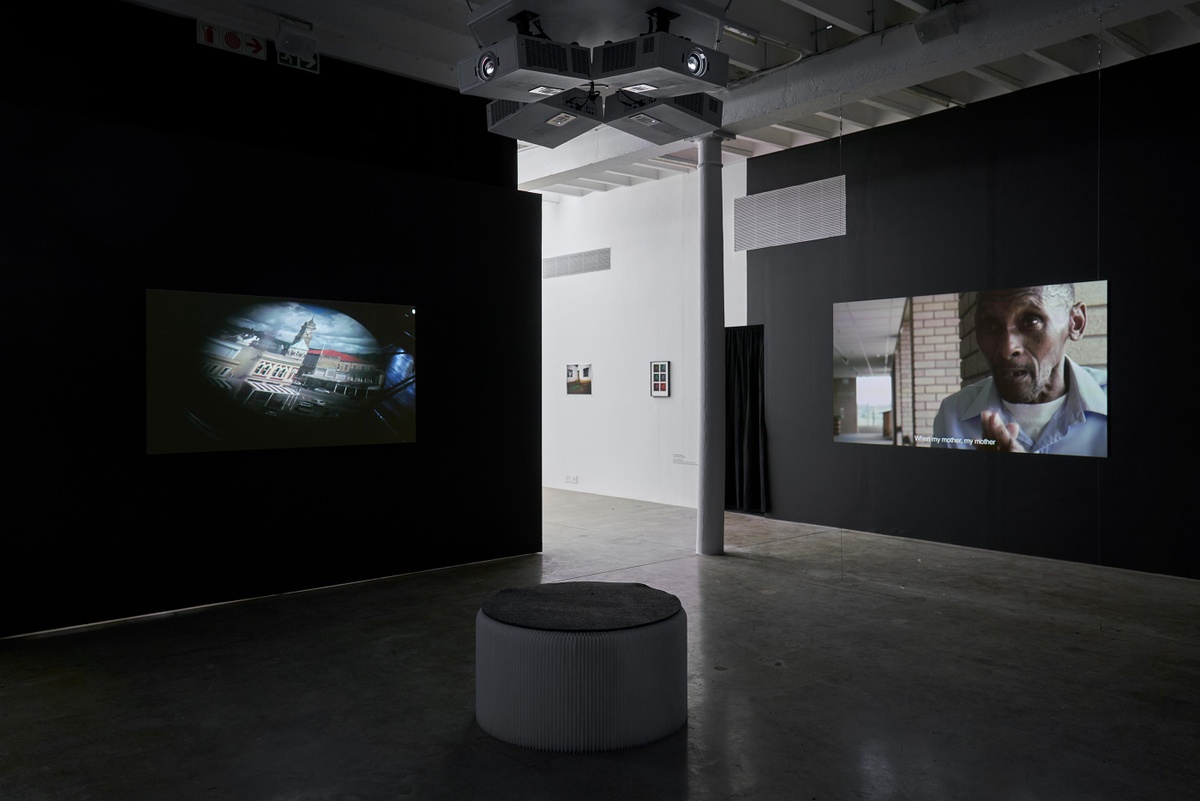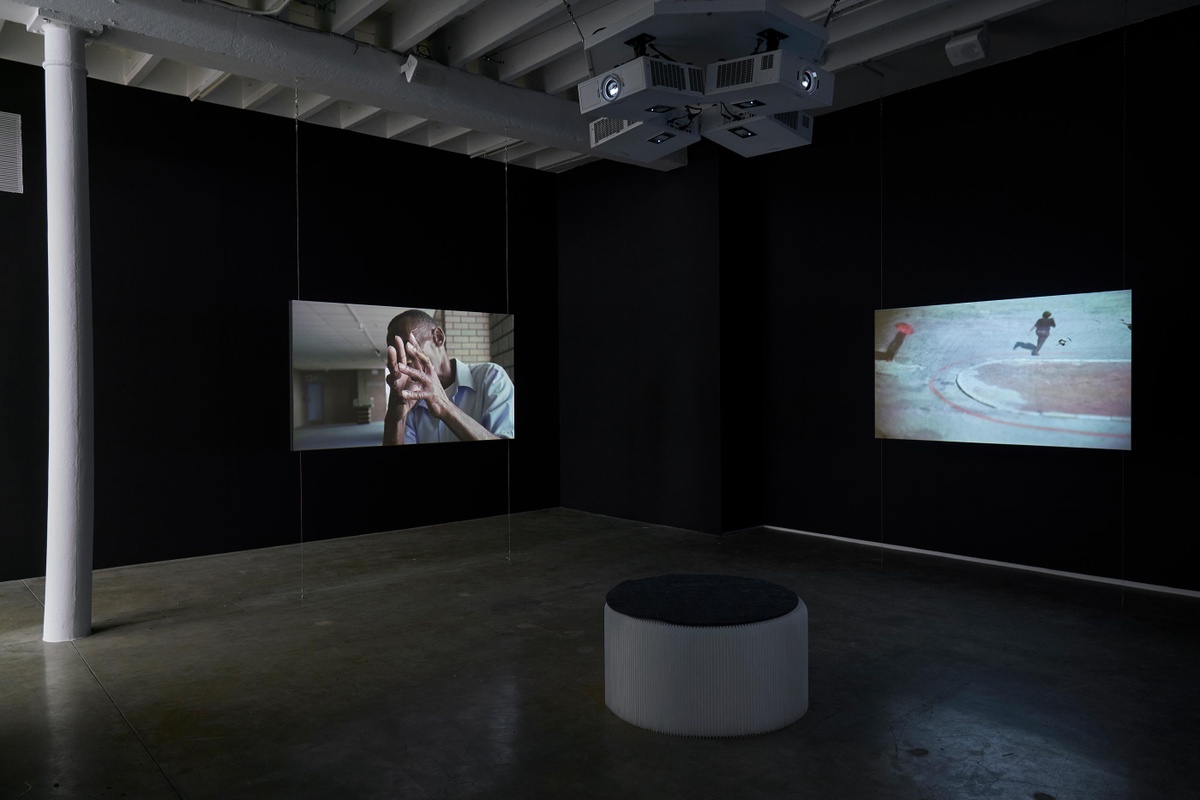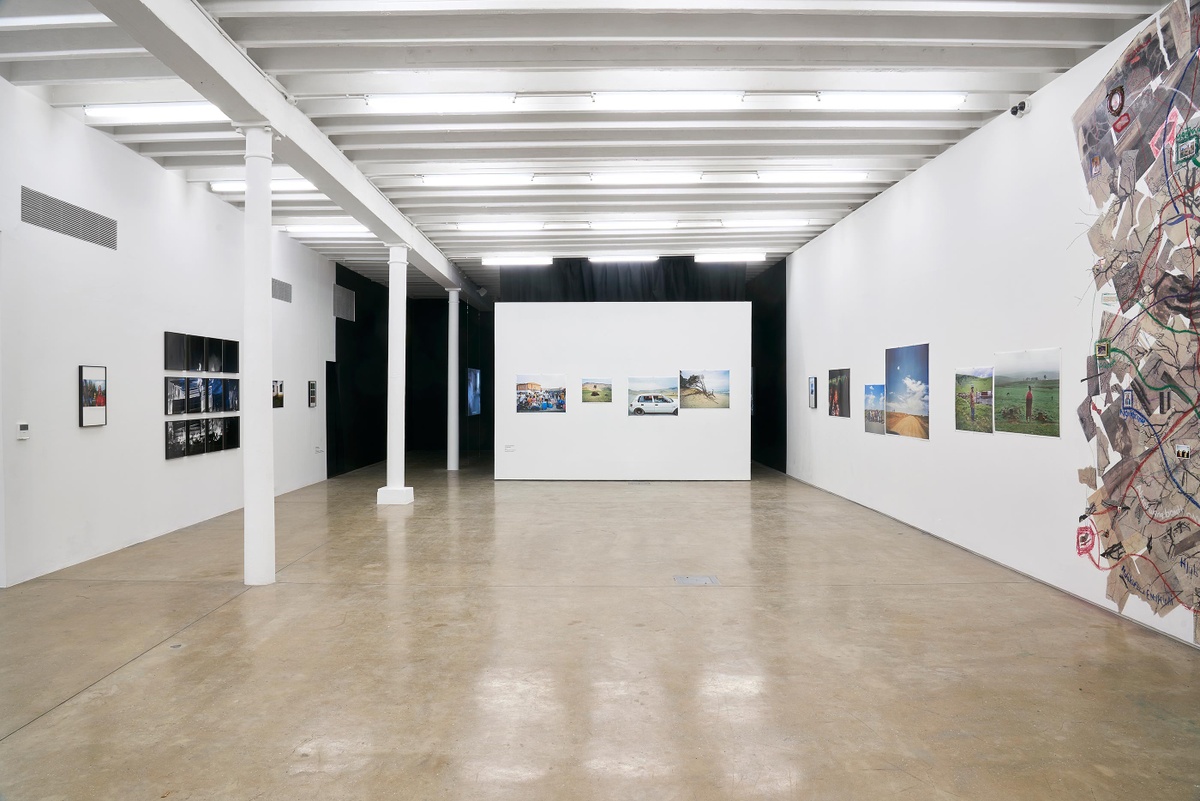Mikhael Subotzky

A filmic portrait in four parts, Moses and Griffiths recounts the stories of two men and two buildings. Both men, Moses Lamani and Griffiths Sokuyeka, are tour guides and custodians of historical sites in Makhanda (formerly Grahamstown), South Africa; the Observatory Museum, with its nineteenth-century camera obscura, and the 1820 Settlers Monument, built in the 1970s, respectively. Both appear twice, on two of the work’s four screens. They offer, in turn, their official tours – with their rote histories and platitudes – and, at Subotzky’s invitation, more personal reflections on the place, its past, and their lives in it. The four-channel film moves between these modes; pairing the impersonal with the intimate. Moses and Griffiths, Subotzky suggests, “is a meditation on the relationship between institutional and personal memory, and the discord that occurs when they are brought together. It is also a detailed study of both the protagonists and the politics that is written into the architecture that their stories inhabit.”
b.1981, Cape Town
Mikhael Subotzky remains deeply attuned to the ethical shortcomings of narrating a nation, yet continues to recount the country’s disparate realities even as he questions his medium. His first body of documentary photographs, Die Vier Hoeke (The Four Corners) (2004) witnessed the underbelly of the South African penal system and made visible that which more often goes unseen – the necessary intimacy of inmates, the rituals of prison life, the fraternity of gangs. Subotzky’s subsequent photographic projects continued in this vein, chronicling post-apartheid life and the structures that shape them, both built and bureaucratic. He has since extended his practice to include film, painting and collage, in an interrogation of the assumed validity of photographs as facts. Probing at the documentary tradition, Subotzky works against the photograph’s claim as indifferent and indexical. Rather, he suggests, every image reveals something of the artist, the subjective seeing eye that frames even the most objective of images. His work is then both social document and personal record, an account of shared narratives and singular impressions.


